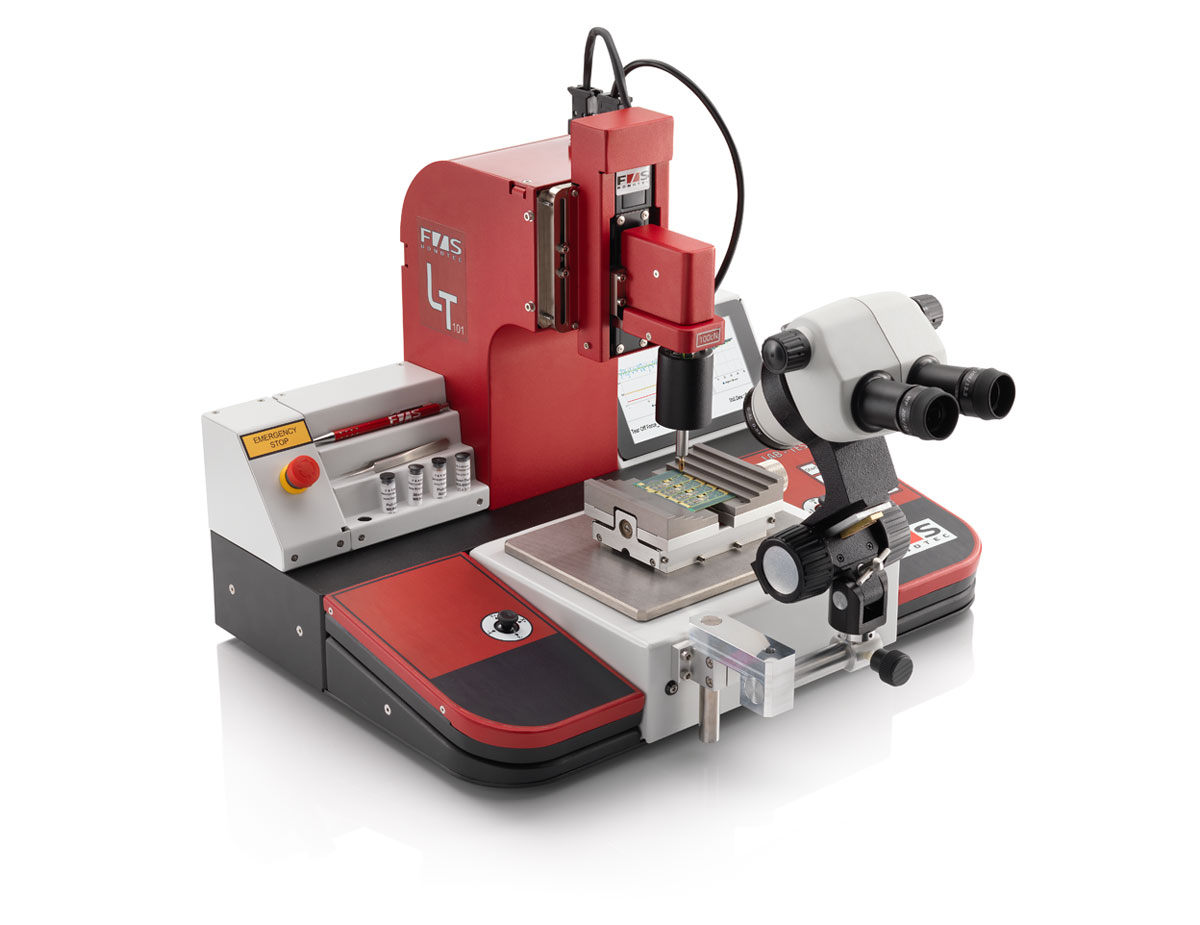
What is Pull Testing in Wire Bonding?
Pull Testing is a testing method that evaluates the strength and reliability of wire bonds by determining the pull-off force at which the bond wire will fail.

Types of Pull-Tests
Destructive Test
In a destructive test, testing goes on until the test object is destroyed (e.g., a broken wire during pull test). The force used to do this is recorded. In addition to the test force, the break code is obligatory. This break code defines the location of the defect and its appearance. The benchmark of the minimum required force for the destructive test is according to the wire diameter, the material, and the application. Usually, there are company requirements that must be met.
IMPORTANT:
In addition to the measured force, the real forces at the bonding pads must also be determined during the pull test (the 5600C machine does this automatically).
Non-destructive Test
In the non-destructive test, testing continues until a previously defined force is reached. This force is held for a certain period and then released. As a rule of thumb, a maximum of 10% of the destructive measuring force can be assumed to avoid damaging the bonding wires. This test is e.g., as a 100% test for prototypes, but also for very valuable chips and security components.
How does it work?
During Pull Testing, the tester carefully applies tension to the wire bond until it reaches its breaking point. The force required to rupture the bond is then measured, providing crucial insights into its structural integrity. This enables manufacturers to identify potential weaknesses, optimize bond parameters, and enhance overall product quality.
Advantages of Pull Testing
- Quality Assurance: Pull Testing ensures that wire bonds meet the required strength standards, reducing the risk of premature failures and enhancing product reliability.
- Process Optimization: By analyzing the results obtained from Pull Testing, manufacturers can fine-tune wire bonding parameters and optimize the manufacturing process, leading to improved efficiency and cost-effectiveness.
- Enhanced Product Performance: Pull Testing helps in identifying weak or inadequate wire bonds, enabling proactive measures to prevent potential failures and ensure optimum product performance in demanding applications.
- Customer Confidence: By implementing Pull Testing as part of quality control protocols, manufacturers demonstrate their commitment to delivering high-quality, reliable products, earning trust and confidence from customers in diverse industries.
Machines for Pull-Testing for Wire-Bonds
Why test automatically?
Disadvantages of manual testing: Depending on the scope and frequency of the random samples, manual testing involves a considerable number of human resources. At the same time, the test results are heavily influenced by unintentional and intentional actions by the operator. (e.g.: position of the pull hook) This weakens their meaningfulness and their reliability in practice.
Unbeatable arguments for automatic testing
PRU and the correction of twist to twist: Thanks to our image recognition (PRU), which even detects a twist on a twist and corrects it correctly, you have a 100% reproducible tool position on the bonding wire or bond foot.
The programming of the components (chips) and the associated wires is kept very intuitive and clear. The point of attack of the pull hook can be programmed both globally and individually for each wire. The tester then automatically considers all changes in the tool position that are required by fluctuating component positions and registers the actual bond coordinates.
This means that the loop angle can later be determined during the pull test and the loop height is known and used to calculate the real bond forces on the source and destination bond.
Tool Tumble
Thanks to a complex mathematical calculation, the offset of a bent pull hook can be corrected by the operator after a short procedure. The machine then hits the exact required position again, thereby preventing damage to the neighboring test wires.






